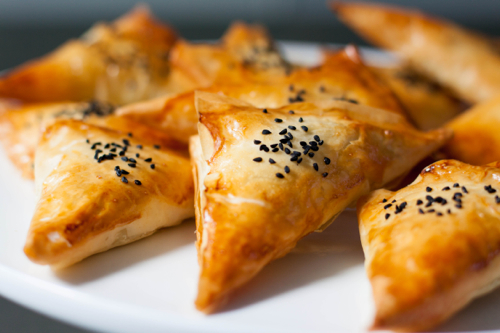Rack of lamb with smoked aubergine puree and harissa
 Tuesday, August 8, 2017 at 9:16PM
Tuesday, August 8, 2017 at 9:16PM 
I think I have finally worked out why it has become fashionable in recent years for restaurant menus to simply list key ingredients rather than call their dishes something.
Rack of lamb with smoked aubergine puree, caramelised spring onion, crumbled feta, kalamata olives, harissa and a sprinkling of pistachios.
That's how a '90s menu would probably have described this dish. It’s a bit of a mouthful isn’t it? But choose a few key ingredients and list them like this and you have something much more appealing:
Rack of lamb | Smoked aubergine | Harissa | Pistachio
Same dish, different sales pitch. Which would you order?


